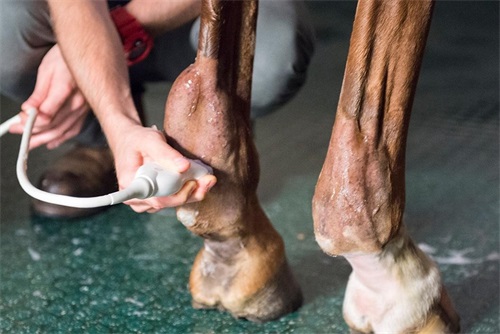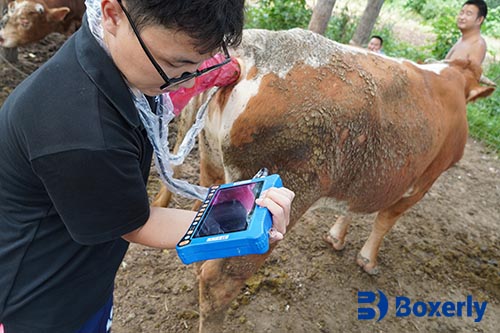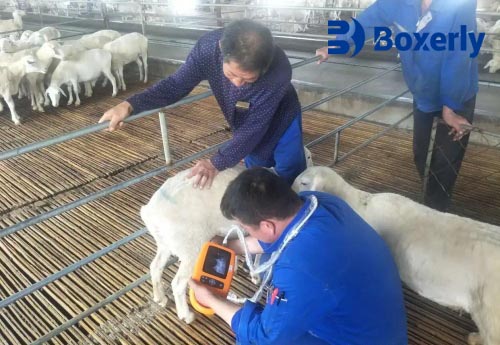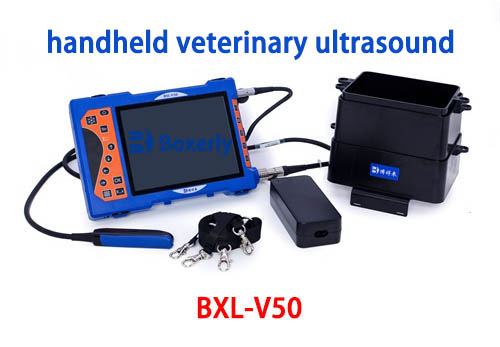Ultrasound has become an essential tool in modern veterinary medicine, especially for large animals like cattle, horses, and pigs. As a livestock farmer, I’ve seen firsthand how valuable this technology can be—not just for diagnosing health issues, but also for improving breeding outcomes and reducing economic loss. However, while ultrasound brings many benefits, it’s not a perfect tool. There are certain limitations and practical considerations that animal owners and veterinarians need to keep in mind.

In this article, I’ll walk through the main advantages and disadvantages of using ultrasound in veterinary settings, particularly for large farm animals. Whether you're a fellow farmer or a vet working in the field, I hope this gives you a practical look at how ultrasound is shaping animal care.
Advantages of Ultrasound in Veterinary Practice
Non-Invasive and Painless
One of the biggest strengths of ultrasound is that it’s non-invasive. It doesn’t involve any cuts, anesthesia, or painful procedures. That makes it safer for the animal and less stressful for everyone involved. Unlike X-rays, it also doesn’t emit harmful radiation, so it’s safe to use repeatedly—whether you’re monitoring a pregnancy or tracking the healing process of an internal injury.Real-Time Imaging
Ultrasound provides live, real-time images, which allows veterinarians to assess organ function and movement instantly. For example, during pregnancy checks in cattle, you can immediately confirm fetal heartbeat, movement, and position. It’s also useful for guiding procedures like fluid drainage or biopsies with great accuracy.Early Pregnancy Diagnosis
For breeders and farmers, early detection of pregnancy is vital. With ultrasound, you can confirm pregnancy as early as 25–30 days in cows and sows. This allows for better reproductive management, including the timely removal of non-pregnant animals from breeding programs, ultimately saving feed, space, and labor.

Diagnosis of Reproductive and Internal Disorders
Ultrasound helps detect a range of conditions that might be missed through physical exams alone. These include ovarian cysts, uterine infections, abscesses, and even tumors. In dairy cows, it’s especially helpful for identifying issues that could interfere with fertility, allowing for faster intervention.Portable and Field-Ready Equipment
Modern Veterinary ultrasound machines are often portable and designed for rugged field conditions. Many run on batteries, can be carried with shoulder straps, and have waterproof features. This makes them ideal for on-farm use where access to power or controlled environments isn’t always available. BXL, for instance, manufactures equipment specifically designed for large animal ultrasound exams in challenging conditions—something I’ve found incredibly useful on my own farm.Cost-Effective in the Long Run
Although the initial investment in an ultrasound machine may seem high, the long-term savings are substantial. Quicker diagnoses mean fewer treatment delays, reduced mortality, better reproductive performance, and improved herd health overall. This translates into lower veterinary costs and increased productivity over time.
Disadvantages of Ultrasound in Veterinary Practice
Operator Skill Matters
One of the most important things to understand about ultrasound is that its effectiveness depends heavily on the person using it. A skilled technician or veterinarian can identify subtle abnormalities, while an inexperienced operator might miss key details or misinterpret what they see. Training is crucial, and not all farms have immediate access to highly experienced professionals.Limited Imaging Depth
While ultrasound is excellent for imaging soft tissue structures, it has limited ability to penetrate deeply or image bones and gas-filled structures. That means it’s not suitable for diagnosing conditions involving the lungs (which contain air) or deep bone injuries. It also struggles in obese animals where fat layers reduce image quality.Equipment Costs
Although ultrasound has become more affordable in recent years, the cost of a good quality machine still isn’t trivial—especially for smaller operations. Add in the costs of protective cases, probes, and maintenance, and it can be a significant upfront investment. Some farmers opt to share equipment or rely on veterinary services rather than purchasing their own units.Restraint and Handling Required
To obtain accurate images, animals often need to be properly restrained. This can be challenging with larger, uncooperative animals such as bulls or mares. Poor handling not only risks injury to both animal and operator but may also lead to poor-quality images. In some cases, sedation might be required, which adds to the cost and complexity.Not a Standalone Diagnostic Tool
Ultrasound is a powerful diagnostic aid, but it doesn’t replace other methods like blood tests, X-rays, or physical examinations. For instance, if there’s fluid in the abdomen, ultrasound can show its presence, but lab tests might be needed to determine whether it’s due to infection, trauma, or disease.

Conclusion
Ultrasound is an invaluable tool in veterinary practice, especially for large animals on farms like mine. It offers a safe, efficient, and relatively affordable way to improve diagnosis, monitor pregnancies, and guide treatment decisions. But like any tool, it has its limits. Success depends not just on having the right equipment, but also on proper training and understanding of its capabilities and constraints.
As technology continues to evolve, we’re likely to see even more user-friendly and affordable ultrasound options in the future. Some of the newer models are already incredibly rugged, lightweight, and optimized for field use—particularly those from companies that specialize in large animal care. (For example, BXL manufactures equipment tailored for farm environments.)

BXL-V50 Veterinary Handheld Ultrasound Device
In the end, ultrasound is not just a veterinary gadget—it’s a smart investment in herd health, animal welfare, and farm efficiency. For anyone involved in livestock production, learning how to use it—or finding a vet who does—is well worth the time and money.
tags:


